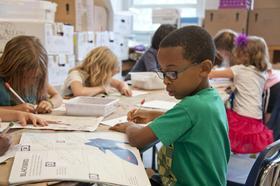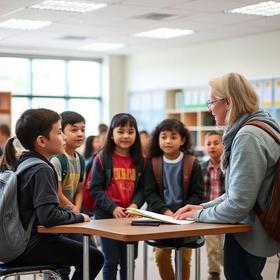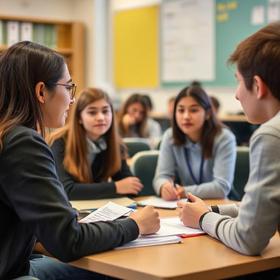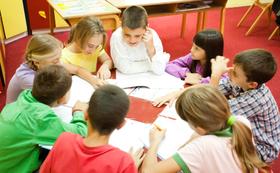Introduction
Every year, the tragic loss of a child or teen to suicide reminds schools, families and communities of the urgent need for thoughtful, coordinated prevention efforts. While the focus of this article is K-12 school settings (including boarding schools), the lessons apply broadly to any educational environment where young people spend significant time. Our goal is to equip parents, educators and students with current evidence, policy context, practical steps and real-world examples to prevent suicide in schools.
The Scope of the Problem in 2025
Recent data show that youth suicide and suicidal ideation remain serious challenges. According to the Jed Foundation, 40% of high school students reported persistent feelings of sadness or hopelessness in the past year.
Among high school students, 20.4% reported seriously considering suicide in the past year; overall, 9.5% attempted suicide.
At the national level, the age-adjusted suicide rate in the United States was 14.12 per 100,000 in 2023.
In 2024, some states experienced alarming surges: for example, in Georgia youth suicides rose by 70% in one year.
These figures illustrate that suicide remains the second-leading cause of death for adolescents and young adults ages 10–34.
Schools are therefore a frontline environment for prevention, since students spend much of their day there, and many warning signs may present within the educational setting.
Why Schools Matter – and What to Focus On
In the school setting, prevention efforts must address multiple dimensions: promoting protective factors, identifying risk indicators early, ensuring timely referral and intervention, and planning postvention to support recovery and community healing. The American Foundation for Suicide Prevention (AFSP) emphasizes that schools need comprehensive policies—covering prevention, intervention and postvention—to empower educators, students and families.
The model policy framework from AFSP provides guidance for districts and schools to adopt consistent language, referral pathways and staff training.
Further, research from the Education Development Center (EDC) shows that a “multi-tiered suicide prevention” (MTSP) framework in schools significantly improves capacity: 75% of pilot schools rated their capacity as “good” or “excellent” after two years of implementation.
Thus, schools are uniquely positioned to:
Spot early warning signs in students (e.g., changes in mood, withdrawal, academic decline)
Provide safe and connected environments
Offer structured referral to mental health services
Engage families in prevention and awareness
Identify and mitigate access to lethal means (where applicable)
Key Elements of an Effective School Suicide Prevention Strategy
Below are the essential components that align with best practices and current 2025 standards:
1. Policy and Governance
Every school (public, private, charter or boarding) should adopt a written suicide prevention policy that covers prevention, intervention and postvention. This document should be communicated to staff, students and families, and incorporate clear roles and responsibilities for educators and support personnel. The AFSP model policy provides a ready-made template.
State boards of education and districts are increasingly named as policy actors in ensuring these frameworks are in place.
2. Staff Training and Awareness
Training for all school staff—from teachers to custodians and coaches—is essential. Staff should know how to recognise warning signs, engage in safe conversations, and refer students appropriately. AFSP recommends regular professional development for school personnel.
Some states now require minimum hours of suicide prevention training for licensed school employees (for example, two hours every three years in Utah).
3. Student Education and Engagement
Students benefit from age-appropriate education about mental health, coping skills, help-seeking behaviours and peer support. Schools should foster a climate of belonging, reduce stigma and provide opportunities for students to connect with trusted adults.
Peer intervention programs (such as those recognised by the Suicide Prevention Resource Center) also show promise in increasing referrals and supportive culture.
4. Multi-Tiered Support Framework
An effective school suicide prevention program adopts a tiered model:
Tier 1: Universal supports — a positive school climate, social-emotional learning, mental health promotion.
Tier 2: Targeted support — students showing warning signs or higher risk (e.g., persistent hopelessness, social isolation, prior attempts).
Tier 3: Intensive intervention — students with active suicidal thoughts or behaviours, requiring a referral to clinical services and follow-up.
EDC’s MTSP framework is built around these components and emphasises system-wide integration.
5. Referral Protocols and Access to Services
Schools must establish clear pathways for referral to in-school or community-based mental health supports, crisis services and emergency care. The model policy emphasizes how to address student attempts or disclosures safely.
Using the national 988 Suicide & Crisis Lifeline (in the U.S.) and local resources is part of the broader support network.
6. Postvention and Community Response
Should a suicide or serious attempt occur within the school community, having a postvention plan is crucial. A coordinated response helps mitigate contagion risks, supports grieving students and staff, and reinforces the school’s commitment to safety and healing. Schools without a plan risk increased distress among their population.
7. Family and Community Collaboration
Engaging families is critical. Schools should host regular communication about mental-health supports, signs of concern and how to seek help. Community partnerships (with mental-health agencies, youth organisations, local crisis centres) strengthen the school’s capacity and linkages.
Real-World Example: A Boarding School Context
Let’s imagine a boarding school setting — one that appears within databases like Boarding School Review — which provides a microcosm of the above strategies. A residential boarding school implemented the following:
A formal suicide-prevention policy updated in 2025, aligned to the AFSP model.
Twice-annual professional development for all staff (faculty, residential advisers, coaches, dining-hall staff) focusing on risk factors and referral pathways.
A peer-lead “Well-Being Ambassadors” program where selected students receive training in mental-health literacy and peer support, then serve as touchpoints.
A tier-2 monitoring system: students flagged by advisers for recurring expressions of hopelessness or social disconnection are referred to the on-campus counsellor.
Collaboration with local community mental-health clinics to provide tele-therapy for boarding students during vacations or holiday breaks.
Established urgent referral pathways to the 988 Lifeline and local emergency services.
Parents receive yearly training and are included in transition-home planning for mental-health follow-up during breaks.
A postvention plan that includes rapid communication, optional counselling sessions for affected cohorts and a memorial-review committee to improve processes.
Because boarding schools involve 24/7 student life and additional transition stressors (e.g., separation from family, intense academic schedule, communal living), these layered prevention strategies become all the more critical.
2025 Policy & Funding Context
Several important policy shifts in 2025 affect school suicide prevention.
The Education Department cut about $1 billion in federal school mental-health grants originally approved under the Bipartisan Safer Communities Act, which has implications for staffing and resource support in K–12 schools.
Additionally, states and local boards are increasingly declaring September as Suicide Prevention Month; for example, the San Diego County Board of Education adopted Resolution No. 2025-19 in September 2025.
This environment means that while schools must ramp up internal efforts, external resource streams may face pressure — making internal capacity-building even more vital.
Addressing Equity, Vulnerable Populations & Boarding School Nuances
Certain student populations face higher suicide risk: LGBTQ+ youth, students with prior attempts, those experiencing bullying or social isolation, and those in transition (such as boarding school residents moving away from home). According to the Jed Foundation, 41% of LGBTQ+ students reported seriously considering suicide versus 13% of cisgender heterosexual peers.
Equity-informed prevention must therefore:
Ensure inclusive policies that explicitly protect LGBTQ+ students and other marginalized groups.
Provide culturally responsive training for staff and student-leaders.
Monitor for stressors unique to boarding environments (homesickness, intensity of schedule, being away from family).
In the boarding context, the residential adviser or dormitory head becomes a critical “first responder” in recognising mood shifts, social withdrawal or peer conflict.
Practical Steps for Schools, Families and Students
For school leaders and staff:
Review or adopt a suicide-prevention policy aligned to the AFSP model.
Schedule annual or biannual staff training in suicide prevention, intervention and referral.
Embed social-emotional learning, student-connectedness and peer engagement into the school culture.
Conduct an environmental assessment (such as EDC’s MTSP tool) to identify gaps in your system.
Ensure referral pathways are documented and accessible, and practice postvention drills annually.
For parents and guardians:
Stay informed about your school’s suicide-prevention programme and policies.
Talk with your child regularly about emotional health, stress and how they are doing socially and academically.
Know the warning signs of suicide (e.g., withdrawal, giving away belongings, persistent hopelessness, agitation) and how to seek help.
Encourage use of school-based supports or external mental-health services if needed.
In the boarding-school context, coordinate with the residential team to maintain open communication, especially during vacations or term-break transitions.
For students:
Recognise that asking for help is a strength, not a weakness.
Aim to stay connected — to peers, mentors, advisers — and don’t isolate yourself in stress.
Learn your school’s mental-health resources (counsellor, peer-ambassador, residential adviser).
If you see a peer in distress, don’t ignore it — talk to them and notify a trusted adult.
During boarding transitions (e.g., arrival, break-home, exam periods) manage your schedule, sleep, connection and coping strategies carefully.
Why This Matters More Than Ever
The post-pandemic era, intensifying digital pressures, social isolation and academic stress have all contributed to rising mental-health concerns among youth. Schools are not just academic institutions — they are communities where young people live, learn and relate. Preventing suicide in schools is, at its core, about fostering hope, belonging and support. The cost of inaction is too high.
As one district mental-health professional participating in EDC’s MTSP framework noted:
“We feel that the impact of COVID on the mental-health of our students would have been much worse if we had not had… this programming in place. There is no doubt in the minds of our [MTSP] team that these efforts have saved lives.”
Linking to Private/Boarding School Reviews
Schools listed on Private School Review and BoardingSchoolReview.com are increasingly required to demonstrate robust wellness and mental-health protocols. When reviewing or choosing a boarding or private school, ask: what suicide-prevention policy is in place? What training do staff receive? How does the school monitor student emotional health, and what supports exist for boarding students during non-academic hours? These questions matter for the safety and well-being of any young person.
Conclusion
Preventing suicide in schools is not a standalone initiative—it must be fully integrated into the school’s culture, policies and daily practices. As of 2025, the data, policy frameworks and implementation tools are available; the challenge now lies in consistent, comprehensive adoption. Whether you are a parent, educator or student (especially in a boarding setting), you have a role to play. Ask the tough questions, engage the supporters, and help build a school environment where every young person feels seen, safe and connected. Because when a school community can recognise warning signs early, intervene effectively and sustain a culture of care, we reduce risk and help ensure that no student’s struggle goes unnoticed.















